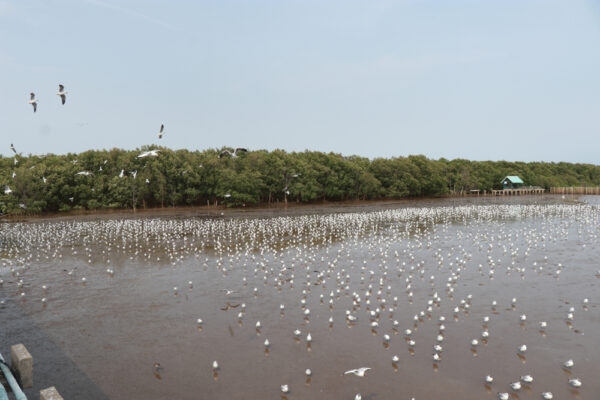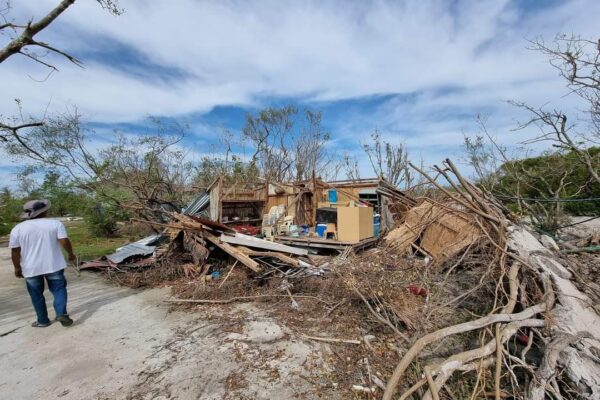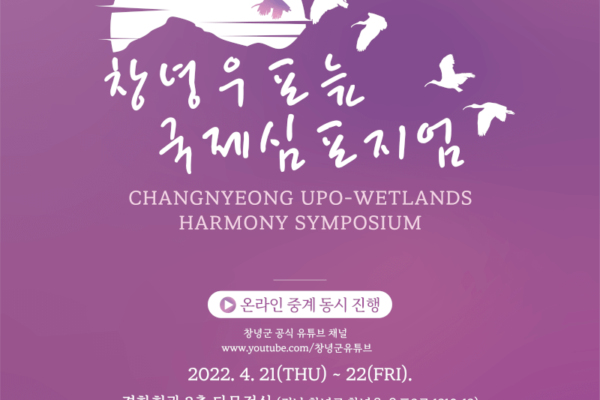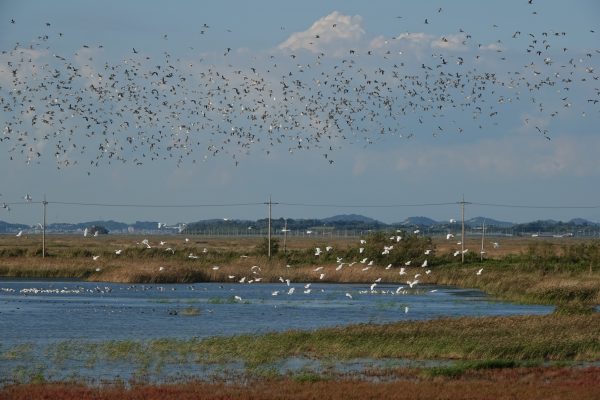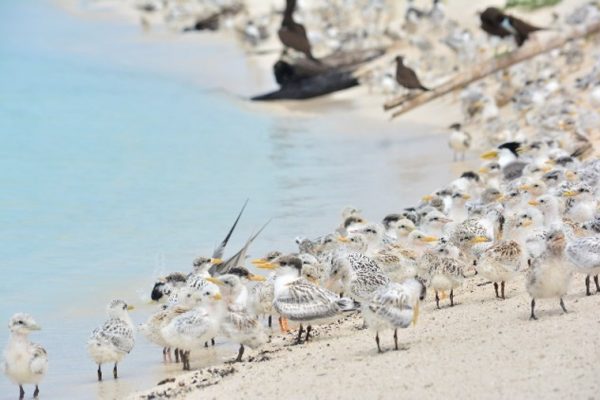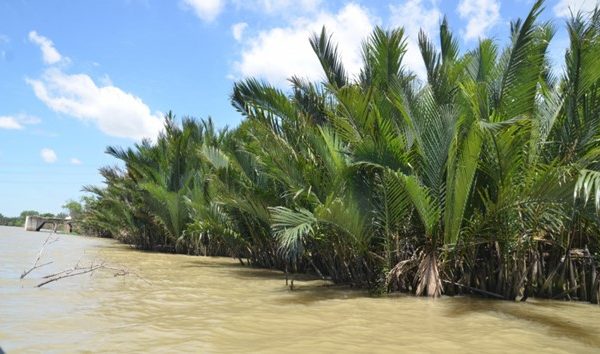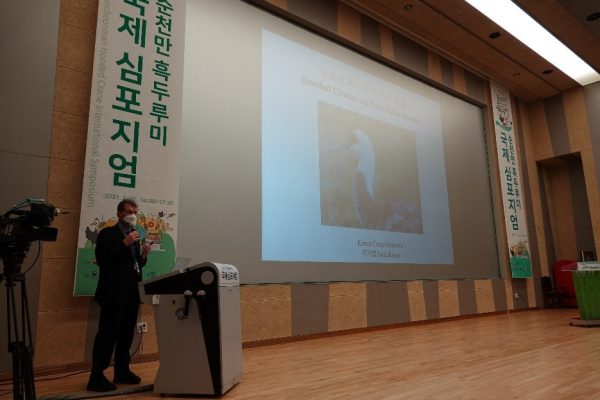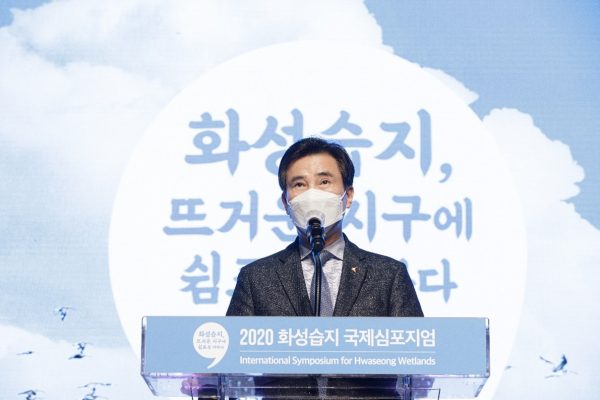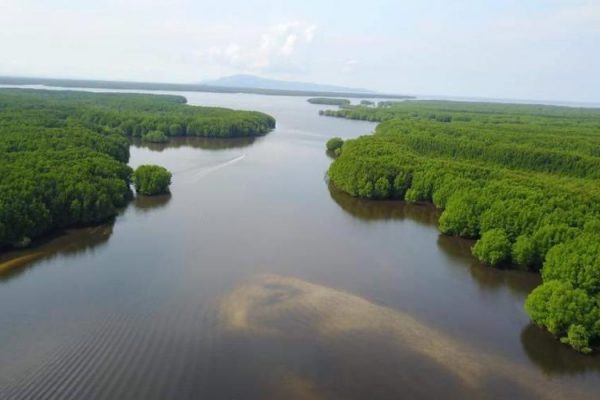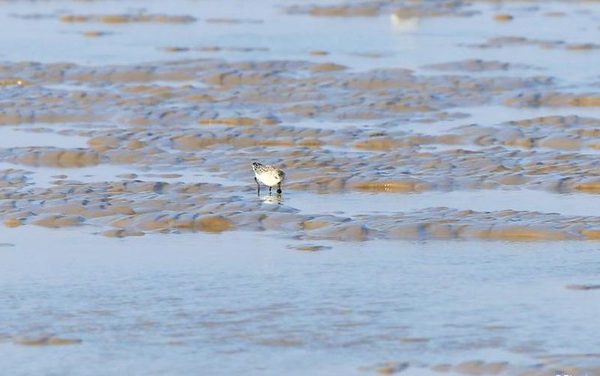-
Thailand is preparing to propose Bangpu Nature Education Center as Flyway Network Site
Office of Natural Resources and Environmental Policy and…
Continue reading -
How you have helped Olango Island in the Philippines recover from super typhoon
©Lorenz Giden Esmero In December 2021, the Philippines was significantly hit by Super Typhoon Rai (Odette). More than 2 million people have been affected, 375 people lost their lives, and almost 700,000 people have been displaced from their homes. It caused damage to basic infrastructures such as housing, buildings, electricity, and water supply. Olango Island, a small coral reef island in the Central Visayas region of the Philippines and Philippines’ first EAAF Network Site (EAAF007) and Ramsar Site, was also devastated by Odette. For its significant number of migratory waterbirds for wintering, staging, and roosting, Olango Island has been considered one of the most important areas in the country. To contribute to the restoration of people’s lives in Olango Island, the EAAFP Secretariat launched a special donation page. The Secretariate mobilized donations from Partners and supporters and delivered 100% of the donations received to the local community in Olango Island in cooperation with Wetlands International in the Philippines. The donations were mainly delivered to the youth and their families associated with the bird sanctuary and Ramsar site. ENR (Environment and Nature Resources) Youth Ambassadors from San Vicente, recognized by DENR (Youth Empowerment Volunteer Exchange -YEVE), is one of the groups we supported. ©Myrson Taneo ©Myrson Taneo Here are the messages from the Olango Island organizer, the ENR Ambassador: “One of the most popular tourist destinations in Olango Island is the Olango Island Wildlife Sanctuary (OIWS), also known as the Bird Sanctuary. Although it is known worldwide, there are residents of Olango Island who do not have a chance to get the opportunity to marvel over the beauty of OIWS. Some residents remain clueless as to how much ecological value as well is at bay. The ENR Ambassador arranged the OIWS Tour on 24 April 2022, entitled ‘The Importance of OIWS in Maintaining Ecological Balance.’ It was attended by volunteers from all over Olango Island, some of which were from the Isla Paraiso Organization and the Parish Youth Catholic Council. Representatives from ENR Ambassador presented the importance of OIWS (Jun Mar Cabarse), Wetlands (Jaynovah Policher), and Seagrasses (Mary Tose Tisoy). Guest speaker, Mr. Arne Jensen from Wetlands International, tackled the Shorebird Migration System of the Migratory Birds, and Mrs. Edilberta Eyas Lambojon, OIWS DMO I of the Department of Environment and Natural Resources, delivered a message about OIWS as well. The presence of birds in a place signifies a healthy environment. On the second half of the tour, ENR Ambassador conducted the ‘Water Bird Gallery Exhibit’ to showcase some of the migratory waterbird species of birds found in the Island, including the flagship species of OIWS, Asian Dowitcher. To ensure that the activity was fruitful, a poster and slogan contest was also held in relation to the tour’s theme. Various ideas and creations were made by our volunteers, deep-rooted from their understanding of the topics discussed beforehand. A clean-up drive was initiated on the OIWS premises as a closing ceremony. The activity was a great success. This would not have been possible without the help of the East Asian-Australasian Flyway Partnership Secretariat through the effort of Mr. Arne Jensen, the Olango Island Wildlife Sanctuary and their staff, our volunteers, and generous donors. We thank you so much for your participation and willingness to learn and grow as an individual that can help our community develop.” © ENR Ambassador team in Olango © ENR Ambassador team in Olango © ENR Ambassador team in Olango © ENR Ambassador team in Olango
Continue reading -
Join the Changnyeong Upo Wetland Harmony Symposium, Ro Korea
With the support of the EAAFP Secretariat, Changnyeong Upo Wetland Harmony Symposium will be held in Changnyeong County, Gyeongsangnam Province, Ro…
Continue reading -
The training workshop for wardens/rangers to conserve Hwaseong wetlands (10 days in August & November, in the RO Korea)
Birds Korea will hold a workshop to train the future local wardens to conserve the Hwaseong wetland for five days from 9th to 13th August with the support of…
Continue reading -
EAAFP Small Grant Fund project: 2021 Tubbataha Seabird Survey, Philippines
Seabirds spend their entire life in the open ocean, hence, they are a good indicator of coral reef health. Their nutrient-rich droppings fertilize roosting grounds and the surrounding water to the benefit of other marine life. Seabirds are one of the most highly threatened species of animals. Although they have a relatively long life span, they breed much slower and have fewer offspring than other birds in general. Partly supported by EAAFP Small Grant Fund for Working Groups and Task Forces, this year, the Tubbataha Management Office (TMO) use seabirds as an indicator to assess of how well – or how badly – the site are conserving Tubbataha Reefs Natural Park, A Flyway Network Site (EAAF 123) in the Philippines. We monitored the population of the seven species that breed in the Park, the: Red-footed Booby (Sula sula), Brown Booby (Sula leucogaster), Masked Booby (Sula dactylatra), Great Crested Tern (Thalasseus bergii), Sooty Tern (Onychoprion fuscata), Brown Noddy (Anous stolidus), and endemic Black Noddy subspecies (Anous minutus worcesteri). We use various monitoring methods and integrate results for a more accurate estimate of the populations. Distance counts are conducted once a month, while direct counts are done once a quarter. In-flight counts are done late in the afternoon, and dawn counts are made before the birds leave the islet to forage for food. When called for, we would do night counts of birds that come to roost after sundown. Adults, subadults, juveniles, pullus, eggs, and nests of each species are counted. Two teams conduct the count of the various species in various life stages. In all, it took a total of 39 teams to complete the survey. In May each year, we join the marine park rangers (MPR) for quarterly monitoring. The Covid 19 situation interposed several complications that delayed our trip, with interesting results. Together with WWF-Philippines staff, and volunteers, we were finally able to set sail on 2 June 2021. This year’s survey was funded by the East Asian-Australasian Flyway Partnership (EAAFP), Department of Environment and Natural Resources (DENR), and Pilipinas Shell Foundation, Inc. (PSFI). Report of the surveys will be shared by the end of 2021. Tubbataha Reefs Natural Park is both a Ramsar site and a Flyway Network Site of the EAAFP. Located 92 nautical miles southeast of Palawan, it is a 97,030-hectare marine protected area which was established on 11 August 1988. It is the largest no-take marine protected area in the Philippines. Its two islets are among the last known safe breeding habitats of seabirds in Southeast Asia. Article prepared by Tubbataha Management Office. The Tubbataha Reefs Natural Park is in the middle of the Sulu Sea. It is composed of two atolls and a reef. The Bird Islet is in the North Atoll and the smaller South Islet is located in the South Atoll. Marine park rangers construct the ‘Tubbataha Hilton’, our shelter from the sweltering heat in Bird Islet. Photo © Segundo Conales Jr Our team from Puerto Princesa City met with MPRs at the ranger station upon arrival. Research Officer Retch Alaba gave a briefing on the work at hand and assigned tasks for each person. Photo © Rowell Alarcon Our first task before setting foot on the islets was to do a distance count. Park Ranger Jeffrey David (in blue) leads the count in Bird Islet, where 80% of the total seabird population of Tubbataha reside. Photo © Rowell Alarcon In the following days, the teams got busy with their respective tasks. Here, one group counts the eggs of the Great Crested Tern. Photo © Kymry Delijero Showing off their EAAFP hats, Angelique Songco and Rowell Alarcon count Brown Noddies. Photo © Kymry Delijero Marine Park Ranger Segundo Conales Jr., (with umbrella) counts the eggs, nests, and adults of Black Noddy in the structure while John Eric Magbanua, Bantay Dagat of Local Government of Cagayancillo (LGU), serves as recorder. Photo © Retch Alaba From left: MPR Noel Bundal, SN2 Paul Balonsay PN, and Joan Pecson, WWF-Philippines, start the in-flight count at 4:30, when birds begin to arrive from the day’s foraging. Photo © Kymry Delijero The team doing a night count of the Sooty Tern population that landed after sundown. The estimate was 6000 individuals! Photo © Kymry Delijero From left to right: Marine Park Rangers Segundo Conales Jr, SNDP Paul Balonsay PN, SN2 Francis Lim and Noel Bundal (in blue shirt) with tallies their day’s count in the native dining table inside our hut. Photo © Kymry Delijero We observed lesser seabirds, probably because we arrived at the end of the breeding season when most of the adults have left. We also counted lesser eggs because most of the birds were already in the pullus or juvenile stages. Photo © Kymry Delijero Black Noddies continue to occupy the artificial nesting structures we built in 2017. Last year, we added new structures made of PVC and steel pipes (above), which are designed to last longer. Photo © Gerlie Gedoria We planted saplings of native trees in the islet in 2020 but most did not survive. Marine Park Rangers Amado Cayabo (LGU) and Cris Caranay (TMO) construct bamboo guards around a sapling so birds would not build their nests on the saplings and use their leaves as nesting materials. Photo © Kymry Delijero The only known breeding Masked Booby in Philippines lain an egg for the fourth time (!) since 2019. A second egg appeared a week later. Photo © Retch Alaba We used the WWF-Philippines research vessel, M/Y Navorca for the survey. Here, the team disembarks for the survey in South Islet. Photo © Rowell Alarcon This year's seabird survey team. Photo © Rowell Alarcon
Continue reading -
IBRRI 4th Annual Meeting to share future opportunities for strengthening wetland ecosystems in the Indo-Burma Region
The EAAFP Secretariat participated in the Fourth Annual Meeting of Indo-Burma Ramsar Regional Initiative (IBRRI) virtually held on 18 February 2021. The aims were for the IBRRI parties to…
Continue reading -
2021 Suncheon Bay Hooded Cranes International Symposium
Every year, Suncheon City holds the festival of the Hooded Cranes in Suncheon Bay in Ro Korea (Flyway Network Site EAAF 079), as they designated 28th February as Suncheon…
Continue reading -
2020 International Symposium for Hwaseong Wetlands: Getting the Benefits of Conservation – Hwaseong Wetlands
On 1st December, 2020, together with Hwaseong City in Republic of Korea, the EAAFP Secretariat co-hosted the International Symposium for Hwaseong Wetlands to promote the importance and values of…
Continue reading -
EAAFP Secretariat and Indo-Burma Ramsar Regional Initiative (IBRRI) signed MoU to strengthen wetland and migratory waterbirds conservation
The Indo-Burma Ramsar Regional Initiative (IBRRI) signed a Memorandum of Understanding (MoU) with EAAFP Secretariat on 25 September, 2020. The agreement aims to promote collaboration and strengthen conservation and…
Continue reading
- 1
- 2

